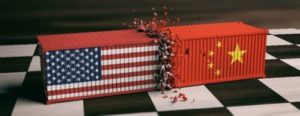By: Adrienne Braumiller, Founder & Partner, Braumiller Law Group, PLLC
One of the more interesting events in the trade arena with China recently occurred with the arrest and subsequent indictment of Huawei’s CFO, Meng Wanzhou, in December 2018. Meng was arrested by Canadian officials, at the request of the U.S., under the suspicion that Huawei, and possibly its foreign subsidiaries, were linked to violations of the sanctions with Iran. Huawei is the world’s largest provider of equipment used to power mobile phones and data networks. As a leader in data networks, Huawei is seeking to develop 5G technology which could help China become a world leader in superior wireless networks. While Meng remains under house arrest, the conversations between the U.S. and China have continued.
In early January, mid-level officials met in Beijing to discuss the current status of the trade war. One major result of these talks was China committing to buy more U.S. goods, a possible first step in resolving both sides mutual concerns. However, since these talks it seems that both sides have regressed. For instance, its been reported that the U.S. has blocked exports from Huawei’s U.S. based entity. In retaliation, China has asked that Chinese companies refrain from taking any business trip to the U.S. Recently, China’s lead negotiator, Liu He, met with U.S. officials to discuss the tariff war. These conversations are currently ongoing. The deadline for a deal to be struck without the imposition of additional tariffs is March 1, 2019. However, there have been rumors that this deadline could be extended an additional 90 days based on ongoing negotiations.
While many companies are anxiously preparing for the possible tariff increase from 10% to 2 5%on over 6000 product lines, other businesses are celebrating the first set of approvals containing List 1 products. The initial list was released by the United States Trade Representative (“USTR”) and published in the Federal Registrar on December 28, 2018, and included seven 10-digit HTS codes, as well as 24 specifically crafted exemptions for other exclusion requests. These exemptions include products ranging from salad spinners, to winches, to thermostats. Companies fortunate enough to receive an exemption should now use the new subheading 9903.88.05 when importing the Chinese made goods. Additionally, the exclusions are valid for one year from the date of publication in the Federal Register (December 28, 2018), and is retroactive to July 1, 2018, which was the date List 1 tariffs went into effect.
At this point, Customs and Border Protection (“CBP”) has not provided entry guidance or implementation procedures for approved exclusion requests. The initial indication was that this guidance would be released ten days after the government reopened. However, it is unclear at this time when these instructions will be provided because of the temporary reopening.
For any additional inquiries, please contact Adrienne Braumiller at adrienne@braumillerlaw.com.

